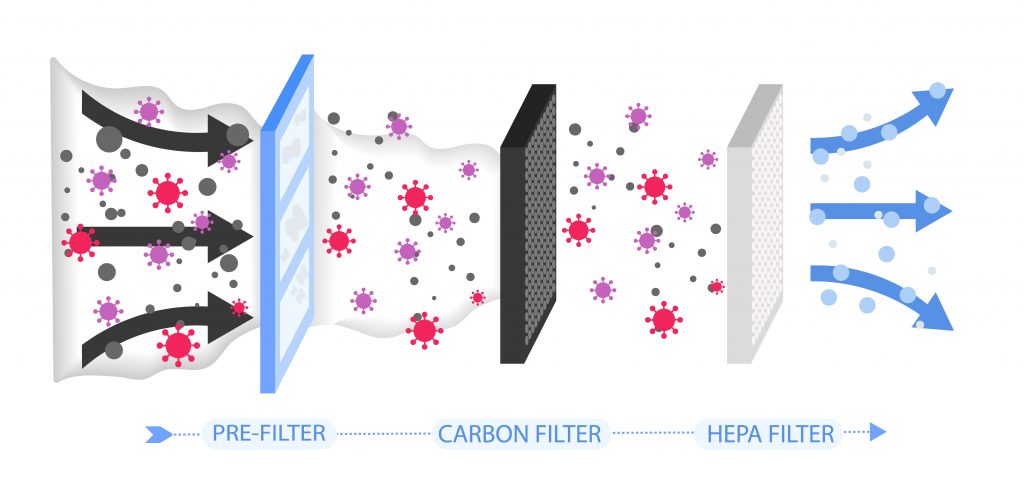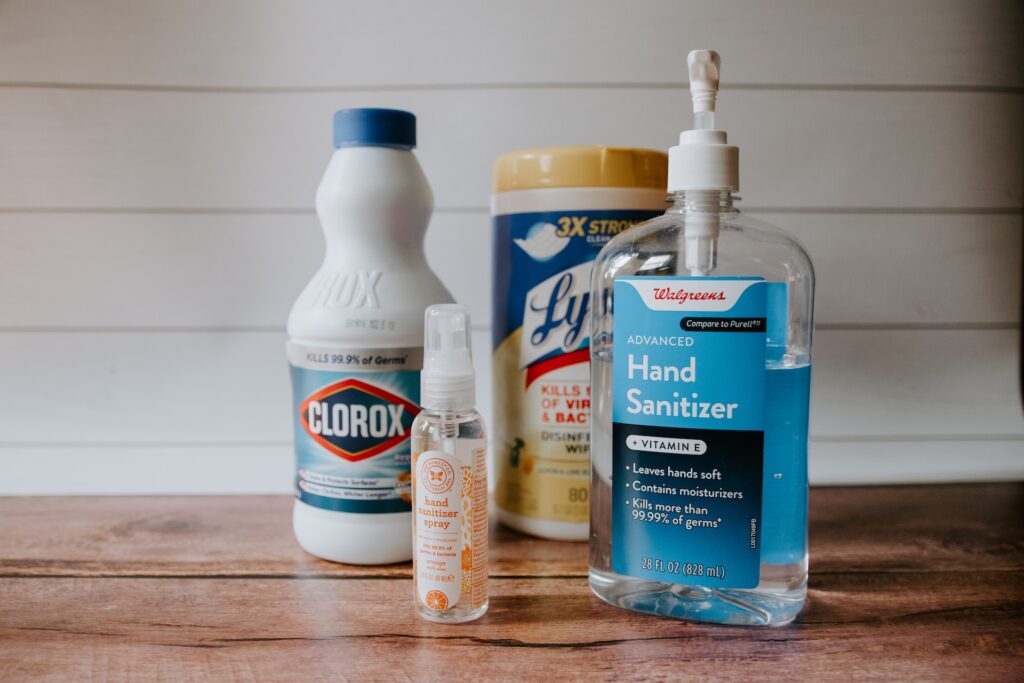Taking Care of an Ill Person at Home
Note: The instructions within this guideline are general guidance for good practices and not specific medical advice. Individuals who have chronic medical conditions or other specific concerns should consult with a trusted medical professional.
How can we take care of someone who is sick with Covid at home? Note that:
- An infected person who is not too ill should ideally isolate away from others.
- Isolating away from others is not always feasible, especially for younger children and others requiring special care.
- Self Isolation at home should be done with careful precautions to prevent spreading infection to family members or housemates.
- People with COVID-19 get sick in different ways, but a person who is sufficiently sick should be taken care of in a care facility.
If symptoms are not severe and the person is not at high risk for developing severe disease due to age, pre-existing illness (diabetes, obesity, COPD, immunosuppressive conditions, etc), they may be able to safely recover at home. Below are important factors to keep in mind when taking care of a COVID-19 infected person at home.
Safer Environment
Communication. Establish alternative ways of social contact within the household and with others. FaceTime, Zoom, and phone calls can be helpful substitutes for in-person interaction while protecting yourself and others from exposure and transmission. Make arrangements for the infected person (patient) to safely communicate urgent needs. Maintain social contact to mitigate feelings of isolation and distance. Be in touch with other family members and friends while keeping each other safe.
Separation. Ideally, the sick person and the caretaker should inhabit separate rooms. Rooms should be designated as Red zones: space where the infected person may breathe without a mask; Green zones: clean spaces that are safer for uninfected people; and Yellow zones: rooms adjacent to the Red zone. Maintain contact only to the extent required to ensure that the essential needs of the patient are met (food, water, medicine, symptom monitoring, and other necessary care). In a household with multiple occupants, it is preferable to limit the number of people taking care of the sick household member to one, and in turn minimize the contact between caretaker and other cohabitants. Where possible, separate bathrooms should be used by the infected and healthy individuals.

Physical distance. Contact with the sick person should be limited to provision of essential care, including preparing and bringing meals, removing used dishes, checking symptoms, providing medicine, and assistance with other essential tasks pertaining to hygiene and personal care if the sick person is unable to fully attend to personal needs.
Masking. Both the patient and the caretaker should wear high-quality, well-fitted masks whenever they are in the Yellow zone, and when necessity requires care provider to go into the Red zone or the sick individual to go into the Green zone. Goggles can provide further protection.
Air purification. High quality (HEPA) air purifiers can dramatically decrease the risk of transmission. Larger ones than conventional standards indicate provide more rapid filtering and would ideally be in every room. A portable purifier can provide air flow directly for breathing in for the patient to reduce viral load and for safety for the care provider. The goal is to maintain a “wall” of filtered air between rooms, between caretaker and patient, and for the purpose of protecting the patient from inhaling exhaled viral particles.
Ventilation, airflow and indoor air quality. It’s important to allow abundant circulation of fresh air, especially when air purifiers are not adequate. Open windows multiple times a day when weather allows. Review other information and measures concerning Respiratory Health for Better Outcomes.
Humidity. Humidifiers are recommended during cold winters and in dry climates.
Hand washing. Caretaker should wear gloves during contact and/or wash hands with soap and warm water afterwards. Hand sanitizer can be an alternative when washing hands is not available or convenient. Avoid touching eyes, nose, mouth and face with gloves or before hands have been washed/sanitized.
Sanitation. Frequently touched surfaces should be disinfected multiple times daily. Where common areas are used, they should be cleaned regularly. If the patient is able, they can help with such tasks in the Red zone. Waste generated by the patient should be placed in closed plastic bags and discarded safely.


Care
Meal preparation. Good nutrition and hydration can help the patient recover more rapidly. If home cooked meals present a burden for the caregiver, prepared options such as canned soups or frozen entrées that are nutritious and familiar may be helpful. Friends, neighbors, or community groups may have meal delivery options available.
If the sick person is not strictly bed-ridden, it is best to leave prepared meals immediately outside the sick house member’s room, and allow them to retrieve the meals and place used dishes similarly to reduce shared air and contact. The patient should have designated dishes and utensils not used by others. Disposable dishes and utensils may be used as a convenience. Wash dishes and utensils with gloves, soap and hot water. Eat in separate areas, and care provider should avoid gathering with others in the home. Mealtime visitors should be avoided. Virtual communication options during mealtime helps support social connection.
Good food. Some appropriate drinks, meals and snacks for the sick housemate are:
- Fluids. Hydration is important to promoting effective healing
- Tea or herbal tea, warm or iced
- Water
- Lemon water, other diluted juices, or flavored beverages
- Electrolyte drinks, especially if excessive sweating or diarrhea are present
- Soups. Many soups provide good nutrition, are easy to digest and provide hydrationas well
- Chicken and/or vegetable soup (for example, [1])
- Egg-drop soup — simplest is to heat water to a boil, scramble an egg in a bowl with a little water and gradually pour it into the hot water while stirring with a fork, add salt. Many other ingredients are possible but even this simplest recipe is good
- Lentil, barley and other grain soups are heavier soups and should be prepared if the sick individual feels they can eat heavier foods
- Other good nutrition. Provide favorite foods that are easy to digest, with diverse nutrients, relatively mild flavoring, and appropriate to cultural norms. Follow traditional cultural guidelines recommended for other illnesses.
- Gastrointestinal problems. When gastrointestinal symptoms are present limit foods to those that are easier to digest, medical consultation is needed if severe diarrhea continues for 24 to 48 hours.
- Weight loss. When an ill person has difficulty eating and weight loss is feared, provide food that they will eat most willingly, is easy to digest, and, if recommended by medical consultation, includes higher energy and protein content foods.


Monitoring and Action
The advice provided here is based on general knowledge; however, it is important to be aware that medical advice would require knowledge about individual circumstances. Please check and confirm with the patient’s doctor.
Be prepared for transfer to medical care. Have readily available the contact information of the patient’s doctor, as well as contact information for emergency medical care and how to get to the nearest emergency department. Have a plan to get the patient to a hospital if symptoms worsen.
Symptom monitoring. Carefully and frequently monitor symptoms, both in the caretaker and the patient. Take temperature measurements several times/daily and note any patterns throughout the day (for example, temperature may tend to be higher late in the day). Purchase an oximeter and monitor oxygen levels and heart rate. It is best to practice monitoring when healthy to see what the baseline is. Count breaths per minute. Keep a record of daily symptoms, including temperature, oxygenation, heart rate, breathing, and note also coughing, fatigue, general malaise, aches, etc. Avoid sharing any equipment for symptom monitoring.
- Contact a healthcare provider for advice on continued monitoring or transfer as soon as new or worsening symptoms occur. These symptoms might include:
- cough
- fever of 103 degrees F and higher
- oxygenation below 95% (more than momentarily)
- difficulty breathing
- confusion
- blue lips or extremities
- severe fatigue
- any symptoms that are severe and/or make it difficult for the patient to care for themselves.

- Evaluate the risk for advancing to severe disease. While certain conditions have been associated with higher risk of COVID-19 complications, risk is not uniform for all individuals that have the same prior health conditions, and even healthy individuals may experience profound negative outcomes from COVID. Nonetheless, be aware of the risk category within which your at-home patient falls . Note that risk is high also among children with pre-existing conditions.
- Keep a journal or notebook to track symptoms along with the time and dose of any medications given and any instructions given by medical professionals.
- Assess severity and progression of breathing difficulties (also called dyspnea). Symptom progression is key in establishing the time course of illness. Note the date of symptom onset, the day of dyspnea onset and its severity (mild-moderate-severe), and if/when the symptom worsened.
- If the patient has oxygen levels of at least 95%, the presence of dyspnea, ongoing/chronic conditions, or reduced alertness can still warrant medical evaluation via tele-health meeting or in person.
- Some questions you can use to assess the patient’s experience of symptoms:
- “Are you experiencing difficulty breathing aside from coughing?”
- “What activities are causing you to feel out of breath from those you could previously engage in with ease?”
- “Has your breathing changed when you are sitting still?”
- “Can you engage in household activities without breathing difficulties?”
- “Do mild activities like walking around your room cause you to feel shortness of breath or dizziness?”
- “Are any symptoms keeping you from sleeping or waking you up from sleep?”
- Shortness of breath during rest can be considered severe and warrants immediate medical attention. Moderate difficulties breathing may make household activities harder, such as climbing stairs, walking around. For shortness of breath to be considered mild it should not interfere with normal daily activities.
- Assess the patient’s mental state and overall appearance. Worrisome signs include confusion, lethargy, behavioral changes, loss of balance, extremities and lips turning blue, absence of urination. These symptoms warrant medical attention.
- Consider contacting the patient’s doctor or a tele-health service for additional assessment and medical advice regarding in-person evaluation when dyspnea is present or worsening.
- Note the onset, progression, and severity of chest discomfort and pain. Note each time there is a change in the patient’s experience of chest pain, pressure, discomfort. If you notice worsening of symptoms, call a tele-health or urgent care services. It is especially important to do so if the person experiencing symptoms has underlying chronic conditions or is elderly.
Medication. Use medications for symptom relief that the patient would typically use during home care of other illnesses, and consult a medical professional before starting a new medication or if there are any concerns regarding medications. Be wary of claims by non-authoritative sources that vitamins and supplements may treat COVID—vitamins and supplements may not have a proven benefit and can cause damage. Consult a medical professional before starting any new vitamins and supplements as well.
Acetaminophen (paracetamol in the UK, Tylenol), ibuprofen (Advil), and naproxen (Aleve) generally reduce fever/lower temperature and reduce pain/discomfort, guaifenesin (Mucinex) may reduce mild congestion, and other over the counter cold medications may help alleviate symptoms. Have those on hand and easily accessible. Be aware of the proper dosing and dose limits. The threshold for taking fever reducing medication is about 103F/39.5C, but fever reducing medications may be taken at lower temperatures to aid in patient comfort and symptom relief. Extended high temperature (for example, sustained for hours) above 105F can be dangerous (this would be very rare, if it does reach near this level use a cold compress or take a cold shower). If the temperature stays high the patient might become confused, get dehydrated and not be able to eat enough. Check with the patient’s physician if these happen, especially if the patient has special underlying conditions. For an otherwise healthy individual, many physicians will be OK with people at home if they can control the fever with fever reducing medications (ibuprofen/naproxen/acetaminophen) at least for some amount of time.
Additional Notes
Testing. Test all members of the household frequently using rapid antigen tests and/or at-home PCR tests. Antigen tests may give a false negative result if viral loads are low, but this may change in a matter of hours. It is therefore best to test at least daily and continue testing for several days after the sick person is no longer symptomatic or begins testing negative.
Linens and towels. Linens and towels used by the patient should not be shared. Laundry should be placed in closed containers/hampers and, if needed, be handled briefly with gloves and while wearing a mask. All members of the household should use personal towels and linens and not share. Do not share any personal items.
Quarantine. While living with and caring for an ill person, minimize contacts with others as much as possible. Remember that feeling well or testing negative may not mean you have not been infected and you can be infectious. To reduce transmission to others, use grocery and medicine delivery services. Other essential needs should met with minimal or no exposure to others. If it is necessary to go outside to locations where other people are present, wear a well fitting high quality mask and get tested before and afterwards, and for multiple days.
Support. When possible or necessary, give encouragement or support for basic needs to a person who is sick. For example, helping them to do what the doctor says and following basic advice including to drink lots of water or juice, to get lots of rest, and to take their medicine. Help them with grocery shopping, and to get other things they need. Be cautious at the same time, so that you take proper measures to protect yourself while doing Everyday Life support.
Pets. COVID-19 can be transmitted to cats, dogs, hamsters, and other pets. Keep pets separate from the patient, wash hands before interacting with pets, and disinfect pet food implements and wash bedding frequently.

